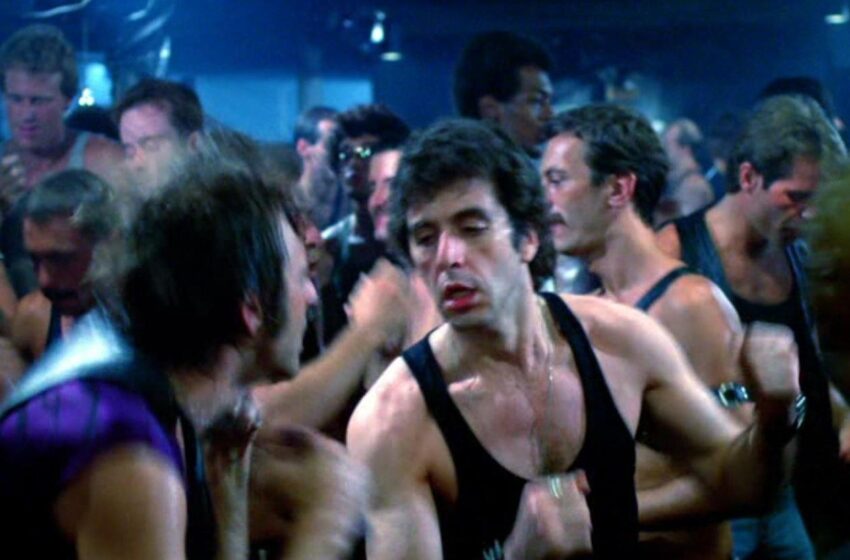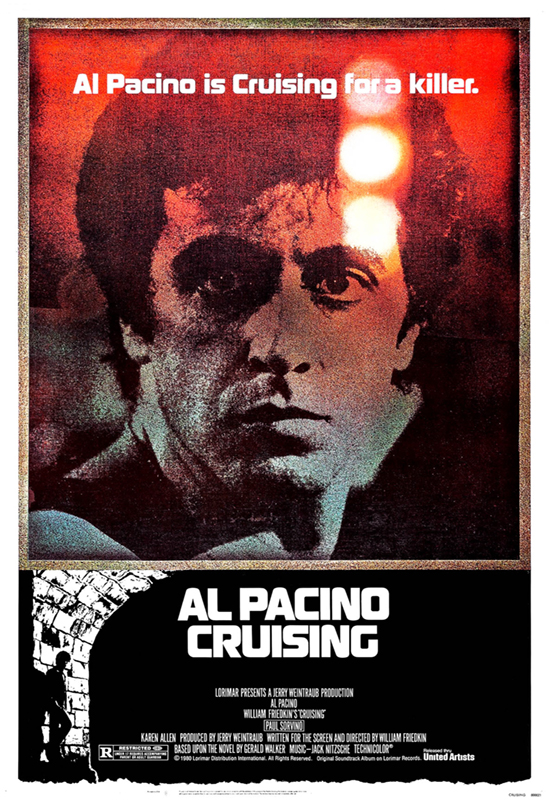
Cruising (1980): Al Pacino is a Genius – Review

Directed by William Friedkin, “Cruising” delves into the gritty underbelly of New York City’s gay leather bar scene. Starring Al Pacino as Steve Burns, an undercover detective investigating a string of murders, the film attempts to marry crime drama with a portrayal of a subculture largely unfamiliar to mainstream audiences of the time. However, instead of being a straightforward thriller, “Cruising” became a lightning rod of controversy, evoking strong reactions from both the gay and right-wing communities.
Plot and Character Analysis: A Dark Journey
Detective Burns, in his quest to unmask the serial killer, immerses himself in the world of gay leather bars. The film uses this backdrop not just as a setting but as a character in itself, painting a picture that oscillates between hedonistic abandon and looming danger. As Burns goes deeper undercover, his own identity and sense of self come into question, adding a layer of psychological complexity to the narrative.
While Pacino’s portrayal of Burns is commendable, capturing the nuances of a man grappling with his own prejudices and vulnerabilities, the film’s depiction of the gay community is where it stirs controversy. The leather bars and their patrons are often presented through a lens of hyper-sexualized exoticism, which, while accurate for a specific subculture, doesn’t represent the entirety of the gay community.
The Gay Community’s Backlash: Representation and Responsibility
The gay community’s primary concern with “Cruising” was its narrow and, at times, negative portrayal of gay men. By focusing on a subculture within the broader LGBTQ+ community, the film risked perpetuating stereotypes, especially at a time when the gay rights movement was still fighting for mainstream acceptance.
The film’s backdrop of murder and mystery, juxtaposed with scenes from leather bars, painted a picture that many in the gay community felt was not just unrepresentative but also harmful. It furthered the notion of gay lifestyles as “other,” feeding into existing prejudices and biases.
During the film’s production, several protests were organized by gay activists. They sought to disrupt filming, using tactics like shining mirrors to interfere with shots, in an attempt to make their displeasure known. Their concerns were not just about representation but also about the potential real-world implications of such a portrayal, especially in an era where hate crimes and discrimination were rampant.
The Right-Wing Community’s Perspective: Morality and Decency
On the other side of the spectrum, the right-wing community also took issue with “Cruising,” albeit for different reasons. For them, the film’s explicit portrayal of the gay leather bar scene was seen as an affront to traditional values. The sexual liberation and openness depicted in the film were at odds with the conservative view of morality and decency.
The film, in their eyes, was not just a work of fiction but a reflection of the broader “moral decay” in society. The right-wing’s backlash was less about the film’s narrative and more about its willingness to shed light on a world they deemed inappropriate for mainstream audiences.
Behind the Scenes: A Production Marred by Controversy
William Friedkin, known for his work on “The Exorcist,” approached “Cruising” with a desire to create an authentic portrayal. He consulted members of the gay community and sought to capture the essence of the leather bar scene accurately. However, the film’s production was fraught with challenges, not just from external protests but also internal disagreements.
Al Pacino, while dedicated to his role, reportedly had reservations about the film’s direction and portrayal of the gay community. The film also faced challenges in editing, with Friedkin having to cut and modify several scenes to avoid an X rating, further muddying the film’s narrative clarity.
Reflecting on “Cruising”: A Film of its Time
“Cruising” is undoubtedly a product of its time, reflecting the societal tensions and prejudices of the late 70s and early 80s. While it offers a glimpse into a specific subculture, its broader implications and the controversies it stirred cannot be ignored. The film serves as a reminder of the impact filmmakers have on culture, especially when portraying marginalized communities. In an industry where representation matters, “Cruising” stands as a testament to the fine line between authenticity and stereotype, between shedding light and casting shadows.




